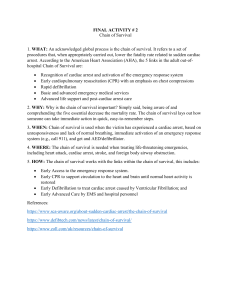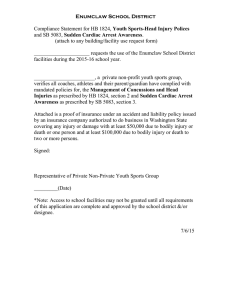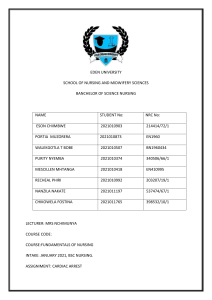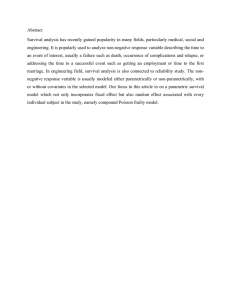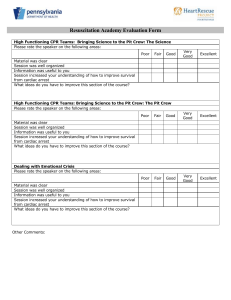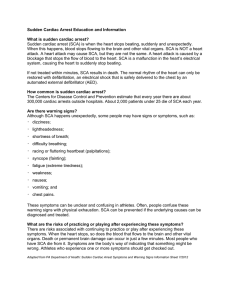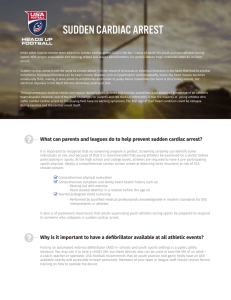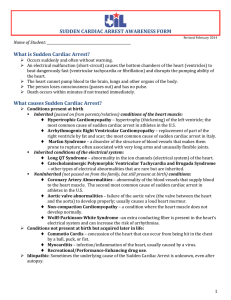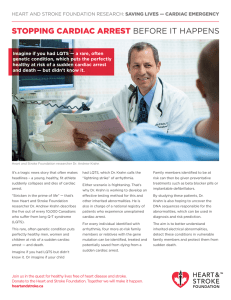In-Class Exercise 4 Correlation and Regression.doc
advertisement
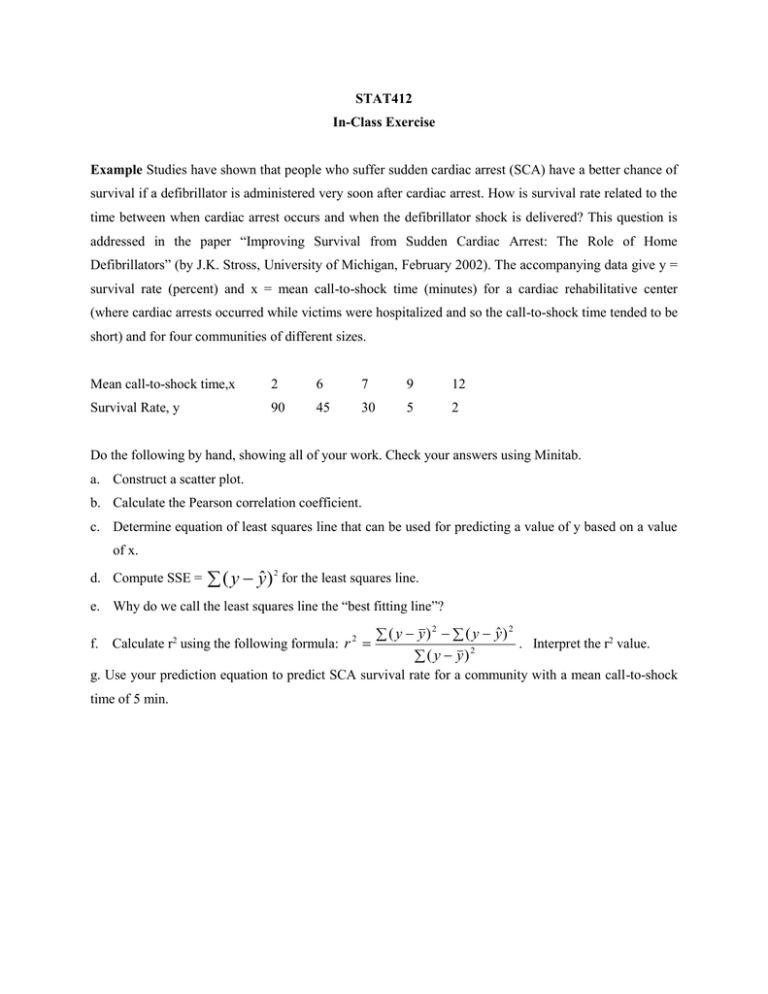
STAT412 In-Class Exercise Example Studies have shown that people who suffer sudden cardiac arrest (SCA) have a better chance of survival if a defibrillator is administered very soon after cardiac arrest. How is survival rate related to the time between when cardiac arrest occurs and when the defibrillator shock is delivered? This question is addressed in the paper “Improving Survival from Sudden Cardiac Arrest: The Role of Home Defibrillators” (by J.K. Stross, University of Michigan, February 2002). The accompanying data give y = survival rate (percent) and x = mean call-to-shock time (minutes) for a cardiac rehabilitative center (where cardiac arrests occurred while victims were hospitalized and so the call-to-shock time tended to be short) and for four communities of different sizes. Mean call-to-shock time,x 2 6 7 9 12 Survival Rate, y 90 45 30 5 2 Do the following by hand, showing all of your work. Check your answers using Minitab. a. Construct a scatter plot. b. Calculate the Pearson correlation coefficient. c. Determine equation of least squares line that can be used for predicting a value of y based on a value of x. d. Compute SSE = ( y yˆ ) 2 for the least squares line. e. Why do we call the least squares line the “best fitting line”? 2 2 ( y y ) ( y yˆ ) f. Calculate r using the following formula: r . Interpret the r2 value. 2 ( y y) 2 2 g. Use your prediction equation to predict SCA survival rate for a community with a mean call-to-shock time of 5 min.
